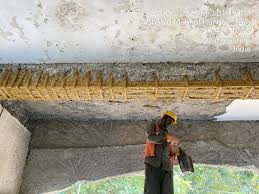
Choosing the right shotgun for home defense is more than picking the flashiest model or the one with the coolest accessories. It’s a decision that balances reliability, simplicity, capacity, recoil, training, and legal and safety considerations. Two primary action types dominate the home-defense shotgun conversation: pump-action and semi-automatic. Each has passionate advocates, sensible trade-offs, and real-world pros and cons. This guide walks through the practical differences so you can choose what makes the most sense for your home, skill level, and peace of mind.
A quick primer: how they work
A pump-action shotgun requires the shooter to manually cycle the fore-end (the pump) to eject the spent shell and chamber a new one. That deliberate motion is simple: shoot, pump, shoot.
A semi-automatic shotgun uses the energy from the fired shell—either gas operation or recoil operation—to eject the spent shell and load the next one, so the shooter only needs to pull the trigger for each shot.
Both feed from a tube magazine (typically under the barrel) and both can be extremely effective with proper ammunition and training. The differences become important in stress, maintenance, and user preference.
Reliability and simplicity: the pump-action advantage
Pump-action shotguns shine for their mechanical simplicity. There are fewer moving parts tied into a gas system or complex recoil mechanism, which means there’s less to go wrong when things get dirty or when you’re running different types of ammunition. In tense moments, that reliability can matter.
Because the user manually cycles the action, pump guns are less sensitive to weak loads (lighter or low-power rounds) or to variations in shell length and brand. If something doesn’t chamber, you can see and feel it when you cycle the action and clear it manually.
For many, pump-action shotguns offer straightforward, predictable operation and maintenance — you clean the barrel and action, and you don’t need to worry about gas ports or pistons. For a home-defender who values rock-solid function and low-tech simplicity, a pump is attractive.
Rate of fire and ergonomics: semi-auto strengths
Semi-automatic shotguns offer a faster follow-up shot because they automatically chamber the next round. For a shooter comfortable with recoil and movement in a chaotic environment, that can be a critical advantage: you can focus on sight alignment and trigger control rather than cycling the action. Less movement between shots can mean fewer chances to disturb your sight picture or lose your bearing in tight spaces.
Semi-autos also typically have softer felt recoil in many designs because gas systems divert some energy to cycle the action. Softer recoil helps shooters—especially smaller or less experienced ones—stay on target and avoid flinching. That can improve accuracy during high-stress scenarios where every shot counts.
However, semi-autos may show sensitivity to ammo choice—some gas designs require sufficient gas pressure to cycle reliably, and low-power rounds (like some specialty birdshot or low-recoil loads) might not cycle the action fully. Recoil-operated designs can be similarly picky depending on the load.
Maintenance and cleaning: the trade-off
Pump guns are straightforward to maintain: fewer parts, simpler disassembly, and less worry about gas fouling. Semi-autos, especially gas-operated ones, need more attention. Gas systems route propellant gases back into the action to cycle the mechanism; over time, that leaves carbon and residue on pistons, ports, and internals which must be cleaned to preserve reliability.
If you prefer low-maintenance gear you can count on with minimal fuss, a pump-action shotgun typically requires less hands-on service. If you’re disciplined about cleaning and comfortable with a bit more maintenance in return for reduced recoil and faster follow-ups, a semi-auto is a reasonable choice.
Ammunition compatibility and flexibility
One of the biggest practical considerations is how well the shotgun performs with the loads you plan to store for home defense. Pump-actions accept a broader range of loads — from low-recoil buckshot to heavy buckshot and slugs — without cycling issues. That flexibility means you can pick a defensive load for penetration and patterning and still have the option to use low-recoil training rounds without concern.
Semi-automatics, especially certain gas guns, sometimes require a minimum pressure to cycle reliably. If you intend to use low-recoil or specialty rounds, test them in your gun before relying on them. Many modern semi-autos however are designed to handle a wide array of factory loads; the key is testing.
Always pattern your shotgun with the exact ammo and at the ranges you expect to encounter. Patterning gives you real-world data: how tight the pattern is, how many pellets hit a target-size area, and how slugs behave for longer-range threats. That’s crucial when choosing both gun and load.
Capacity and reloads
Both pump and semi-auto shotguns commonly use a tube magazine beneath the barrel. Standard tactical configurations often hold 4+1 or 5+1 rounds. Capacity can be extended in turkey or hunting configurations, or short-barreled/tactical setups may accept magazine extensions where legally permissible. For home defense, most users find tube-fed capacity adequate, because the environment is close-quarters and magazine changes under stress are non-trivial.
That said, some semi-automatic platforms accept detachable box magazines (though less common), and there are aftermarket conversions for pumps, but these bring legal and practical considerations. Decide based on local law and on whether you are prepared to train for reloads under stress.
Handling, furniture, and sights
Home defense often involves tight spaces, stairs, and moving around corners. A shorter barrel, compact stock, and a comfortable sighting system matter more than the action type. Both pump and semi-auto shotguns are available in compact tactical configurations with ghost-ring sights, pistol-grip stocks, and rails for lights and optics.
Because the pump requires a fore-end movement, some defensive setups place a vertical grip or heat-shield that can complicate pumping. If you choose a pump, ensure your furniture still allows a quick, unobstructed pump stroke. For semi-autos, consider whether the forend and controls are ergonomically placed for quick manipulation and that you can operate the safety and charging handle reliably in the dark.
Adding a simple red dot or reflex optic can dramatically speed target acquisition in close quarters. Both actions benefit from good lighting and a weapon-mounted light. Practice with whatever configuration you plan to use.
Training and human factors
People are the most important variable in any defensive scenario. A well-trained person with a simple, reliable pump shotgun is often more effective than an untrained person with a semi-auto. The pump’s deliberate action lends itself to clear, practiced drills: point, press the trigger, pump, point, press the trigger. That predictability helps under adrenaline.
Semi-autos reduce steps, but that can also make them easier to neglect fundamentals — inadequate sighting, poor trigger control, or overreliance on rapid follow-ups without aiming. Whatever gun you pick, train until the actions, reloads, stoppage clearances, and transitions are reflexive. Live-fire practice, dry-fire drills, and scenario training make a real difference.
Stoppages and malfunctions
Stoppages will happen. A pump-action’s advantage is visibility and direct control: if a round fails to chamber, you feel it during the pump. Clearing a jam is straightforward: open the action, extract, and continue. Semi-autos may require different immediate action drills depending on whether it’s a failure to feed, extract, or eject, and some shooters find those manipulations less intuitive under stress.
Knowing how to run immediate action drills for your specific gun is essential. Simpler equals easier under pressure, which is why many prefer the pump for people who won’t train frequently.
Safety and legal factors
Home defense isn’t just about stopping an intruder; it’s about minimizing legal risk, ensuring safe storage, and meeting legal requirements in your jurisdiction. Know your local laws about firearm storage, discharge within the home, and what constitutes lawful defense. Many regions have rules about modifying shotguns, magazine capacities, and barrel lengths.
Safe storage — quick access for the defender but secure from children or unauthorized users — is critical. Consider secure gun safes with quick-access features, or other legal, secure solutions. Also weigh whether you and your household members are trained and psychologically prepared to use lethal force if required.
Cost and long-term ownership
Pump-action shotguns are often less expensive to buy and maintain. Fewer parts and simpler construction mean cheaper and sometimes more durable ownership. Semi-automatics can cost more up front and may require more frequent parts replacement or professional servicing if you run them hard or neglect cleaning.
Factor in ammunition costs for training. If you’ll shoot a lot to build skill, the lower per-shot cost and ammo-tolerance of pumps can be an economic advantage.
Which is right for you?
There’s no universal answer. Here are some practical rules of thumb:
-
Choose a pump-action if you value maximum reliability with varied loads, want a simpler maintenance regime, prefer lower purchase cost, or expect minimal ongoing training. Pumps are ideal for owners who want a robust, no-nonsense tool.
-
Choose a semi-automatic if you prioritize faster follow-up shots, reduced felt recoil, and you’re willing to maintain the gun carefully and test ammo compatibility. Semi-autos suit shooters who train regularly and want softer recoil for faster, accurate follow-ups.
-
If multiple family members will use the firearm, think about ergonomics and recoil sensitivity. A smaller-framed shooter might be better served by a semi-auto with reduced recoil.
-
Regardless of action, prioritize a model you can mount a light to, one you can point and index quickly, and one whose controls you can operate in low light.
Final checklist before you rely on a shotgun for home defense
-
Test and pattern the shotgun with the exact defensive load at appropriate distances.
-
Train regularly with live fire and dry runs: reloading, malfunctions, transitions, and using a light.
-
Confirm legal responsibilities and storage obligations in your area.
-
Choose a configuration that allows quick, unhindered operation (for pump users: an unobstructed fore-end; for semi-auto users: reliable cycling with your chosen load).
-
Secure the firearm when not in immediate use but ensure you can access it in an emergency through legal, secure means.
-
Consider less-lethal options and de-escalation plans as part of your home-security strategy.
Closing thoughts
Both pump-action and semi-automatic shotguns are more than capable choices for home defense when used properly. The pump wins for straightforward reliability and simplicity; the semi-auto shines for reduced recoil and faster follow-up shots. The best choice depends on the user more than the mechanism: training, comfort, maintenance discipline, and the loads you intend to use are the deciding factors.
Pick the gun that matches your capabilities and lifestyle, train with it until operation becomes reflex, and keep legal and safety considerations front and center. In a defensive situation, the combination of a reliable tool and practiced, calm competence is what will protect you and your family.

